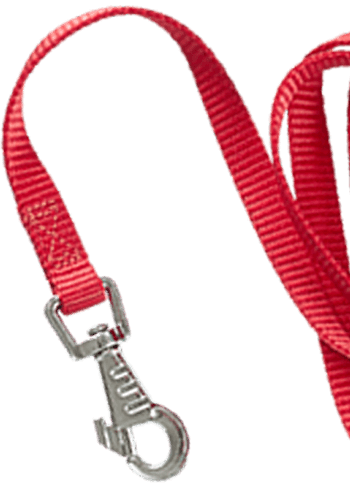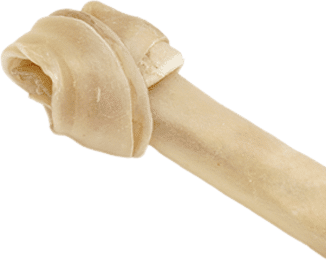


Adopting a golden retriever is one of the best decisions you can make. These loving dogs are constantly praised for their gentle and calm, yet playful nature, making them perfect dogs for all walks of life and types of families.
So when you do finally bring your Golden Retriever puppy home, you want to do everything you can to give them a long and healthy life for years to come.
However, around 35% of all dogs in the United States are overweight or obese. This isn’t necessarily because of negligence but ignorance instead: That is, many dog owners may not know how much to feed their puppies, how often to exercise with them, or what their weight should be throughout their life stages.
This Golden Retriever growth chart and guide will tell you everything you need to know about your Golden Retriever puppy’s growth during his first two years, plus important ways you can keep him healthy well into adulthood.
Adult Golden Retrievers will typically be between 55 and 75 pounds when they’re fully grown. This is a wide range, so keep in mind that the weight of your Retriever will vary depending on genetic factors and sex.
For example, female Golden Retrievers will weigh closer to 55 pounds while Golden Retriever males are heavier and will weigh closer to 75 pounds. Females also typically reach their full size by their first birthday, while males may continue growing through their second year.
But if you’d like to know more precisely how big your golden retriever puppy will get, there are a few tricks you could use to gauge a close-to-exact weight:
If they’re the runt in the litter, then there is a chance that they’ll remain small throughout adolescence and adulthood. However, keep in mind that it’s not unheard of for otherwise healthy runts to grow to the same size as their littermates.
Male Golden Retriever puppies will likely take after their father’s size in adulthood, while female golden retriever puppies will take after their mother’s size.
You can usually tell the size males and females will be based on what their parents look like, which is why Snowy Pines encourages meeting the parents or browsing through their photos and biographies online.
There’s a reason why breeders like Snowy Pines take such pride in their bloodlines, and it’s because of the health and temperament of their dams and sires.
Although not foolproof, doing a bit of math based on your puppy’s weight at 20 weeks (4.5 months) old can help determine his adult weight:
X pounds at 20 weeks ÷ 20 weeks = Y
Y × 52 weeks = Z
Divide their weight at 20 weeks by their current age in weeks and multiply by 52 weeks. So, for example, let’s say your puppy weighs 35 pounds at 20 weeks. You would calculate 35 pounds ÷ 20 weeks = 1.75. Then, calculate 1.75 × 52 weeks = 91 pounds in adulthood.
Or, if your golden retriever puppy is 26 weeks (6 months) old or older, you can use a simpler formula:
Y pounds at 6 months old × 2 = Z total adult weight
Simply double their weight at 4 months of age to estimate their adult weight.
Weight: As a newborn, your golden retriever puppy will weigh less than 5 pounds.
What to Expect: This age is crucial for mother-puppy bonding since he will depend on his mother for food, cleaning, and socialization. After one to two weeks, his eyes and ears will open, his first baby teeth will come through, and he’ll begin crawling and walking.
Golden Retriever Male Weight: Between 8 to 12 weeks, your male puppy will average between 10 to 22 pounds. At this point, he will have between 13% to 30% of his total body weight.
Golden Retriever Female Weight: Although females will grow to be smaller than males, they are typically around the same weight at this age group. Between 8 to 12 weeks, your female puppy will also average between 10 to 22 pounds which will make up about 14% to 32% of her total body weight.
What to Expect: Golden Retriever puppies can eat solid foods at this age since their mother’s milk will begin drying up. The puppies become very playful, curious, and discover their voices little by little. Introductory training like house training is essential. Socialization is also important, which is why Snowy Pines ensures that all puppies stay with their littermates until adoption.
Between 4 to 6 months, your puppy’s growth will slow down a little bit. For female puppies, 6 months is a little over the halfway point to their full-size, and males are essentially smaller versions of their adult bodies. (Remember, at this age, you can multiply by two to determine their adult weight!)
Golden Retriever Male Weight: Male puppies will weigh an average of 30 to 44 pounds which will make up 41% to 60% of their total body weight.
Golden Retriever Female Weight: Female puppies will weigh an average of 30 to 43 pounds which will make up 43% to 62% of their total body weight.
What to Expect: Socialization is still crucial at this age, and more intense training can also begin. The puppy should also be kept in happy and safe environments, as any exposure to something fearful at this age may impact him long-term.
Golden Retrievers grow fast! You’ll notice that your golden’s legs, nose, and mouth will grow faster than the rest of their body so that they may look a little lanky. This is entirely normal: Think of your puppy as a teenager who is going through adolescence and waiting for the rest of his body to catch up.
Golden Retriever Male Weight: Males will average between 48 to 68 pounds between 7 to 12 months, which will make up for 66% to 93% of their total adult body weight.
Golden Retriever Female Weight: Females will average between 45 to 70 pounds which will make up for 64% to 100% of their body weight. You might notice that females could weigh more than males towards the one-year mark, and that’s because they gain their body fat faster since they stop growing sooner.
What to Expect: Don’t be surprised if your Golden Retriever puppy tests its role in the household. They may get territorial and challenge you and other pets for dominance. At this point, your pup will also reach sexual maturity, although doctors and vets recommend waiting to spay and neuter your Golden Retriever until they’re between 12 to 24 months.
Golden Retriever Male Weight: Ages 16 to 24 months is your male puppy’s home stretch to adulthood! Most Golden Retrievers will be fully grown by 24 months old, although this varies. Males will be between 65 and 80 pounds, making up between 94% and 100% of their adult body weight.
Golden Retriever Female Weight: In most cases, females are finished growing before 16 to 24 months.
What to Expect: You’ll notice that your Golden Retriever’s character traits, personality, and temperament are more concrete and consistent. Whatever their nature is like at the 16- to 24-month mark is likely what it will be throughout their adult life.
Golden Retrievers are one of the most popular dogs in America. They are loyal, friendly, and calm, making them the perfect companion for small and large families alike.
However, Goldens are susceptible to certain illnesses and diseases that are common in bigger breeds that are typically caused by overfeeding, stunted or accelerated growth, and genetic issues.
One of the most common diseases that goldens experience is Osteochondritis dissecans (OCD).
OCD is a developmental disease that affects large-breed dogs because of the accelerated growth they experience. It is an inflammatory condition that causes abnormal cartilage development on the end of a bone in the joint.
This can lead to joint problems like arthritis and hip dysplasia which commonly appears in the elbow, hip, and knee.
The good news is that, although larger breeds like golden retrievers are prone to joint issues like this, you may be able to help prevent it through proper practice.
OCD is a specific disease that is more common in dogs that receive too much energy and calcium in their diets. Other common factors are genetics, rapid growth, and hormonal factors.
You can prevent accelerated growth by avoiding overfeeding throughout your Golden Retriever puppy’s first two years. Overfeeding can lead to obesity, and all that extra weight can leave your puppy with skeletal abnormalities that put too much weight on joints.
Working with an experienced breeder who is certified and has the proper paperwork on their puppies and their parents is also a sure way to know your puppy’s future health.
Another way to avoid accidentally stunted or accelerated growth is to ensure your golden retriever puppy is getting fed appropriately and receiving the right amount of calories.
Between 2 and 4 months old, your puppy should eat 4 times per day with 2 ounces per meal. This will add up to 7 to 9 ounces per day, depending on how much he willingly eats.
Between 4 to 6 months, your puppy should eat 3 times per day at 3 to 3 ½ ounces per meal which adds up to 9 to 11 ounces per day, depending on how much he willingly eats.
Between 6 to 12 months, your puppy should eat 2 times per day at 6 to 8 ounces per meal which adds up to 12 to 16 ounces per day, depending on how much he willingly eats. Keep him on puppy food through his first year before switching to young adult food.
If you don’t know what type of food to get your golden retriever pup, check out Snowy Pines’ list of recommended brands and why we stand by them.
Since Golden Retrievers were initially bred as sporting dogs—who are active all day long—it’s essential to ensure that your puppy gets enough exercise and playtime throughout the day to avoid restlessness and obesity.
They must receive regular exercise every day. 15 to 30 minutes twice a day should be sufficient enough. However, this depends on their age. A good rule of thumb is that your puppy can handle exercise five minutes per month they are alive twice a day:
X months old × 5 minutes = Y minute increments
Y minute increments × 2 sessions = Z minutes of exercise time total per day
So, for example, a 3-month-old puppy can handle 15-minute increments of exercise and playtime twice a day which adds up to 30 minutes per day.
However, keep in mind your pup’s health when it comes to exercise. As previously covered, the more your puppy grows, the more susceptible to common diseases like joint problems.
Ages 7 and 12 months are especially fragile because your puppy’s bones are still growing, so be sure that you help them steer clear of big jumps and roughhousing until they’re a little older.
Adding a new puppy to your household is a major decision, but it’s one that thousands of families make every single year.
However, what everybody doesn’t know are the proper feeding amounts, hours of playtime, and expected growth that they should ensure with their puppies—which is why it’s essential to do your research and abide by important guides with a golden retriever growth chart.
Although keeping tabs on your puppy’s weight is a critical part of puppy ownership, you can also ensure you’re starting on the right track by adopting from a trusted and certified breeder.
Breeders with years of experience, like the team at Snowy Pines, work hard to keep pure bloodlines so that all of the parents and their litters are as healthy as they can be, which helps guarantee a lifetime full of happiness without any issue.
If you’re interested in adopting an English Cream Golden Retriever puppy, learn more about how Snowy Pines can help you today.